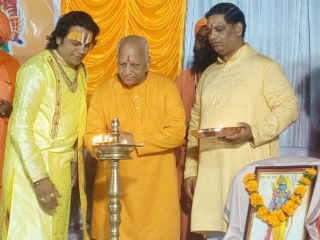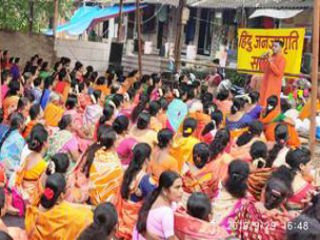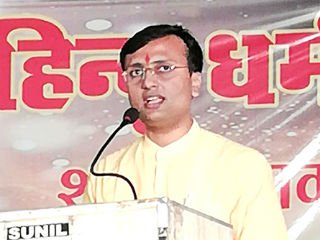

Joint Statement of Ma. Ashok Singhal, patron VHP and Dr. Subramanian Swamy, President Virat Hindustan Sangam and fmr. Union Cabinet Minister made on September 30, 2015 in New Delhi
ARGUMENT FOR THE RAM TEMPLE IN AYODHYA
Religion has in modern India has not been thought of as a force for shaping a moral society. Such negative thinking is considered as constituting “secularism”. But this approach is erroneous. Sri Aurobindo had said: “All great movements of life in India have begun with the new spiritual thought and usually a new religious activity”. Sri Rama is the spiritual head of India, even according to Iqbal, who otherwise a devout Muslim, had called Sri Rama as Imam-E-Hind. It was largely however the works of Tamil saints such as Alwars and Nayanmars that the depiction of Sri Rama evolved from that of a young prince of Ayodhya to that of a divine avatar. Hence Sri Rama symbolizes India’s unity of North and South, just as Krishna unifies East and West. The re-building of Temple at Sri Rama Janm Bhoomi in Ayodhya thus is a national goal of an overwhelming majority of Indians. The goal must however be accomplished legally and with maximum possible consensus. The re-building of the Rama Temple thus is part of our renaissance. It also means righting a historical atrocity on the Hindu people who are 82.5% of India.
THE LEGAL ARGUMENTS
Mark Twain had once said that “It is a lot easier to mislead the people than convince them that they are misled.” This is the reality about the Ram Temple in Ayodhya, the reality about which I wish to bring to national attention. People in India have been misled to believe that a temple and a masjid are both equally revered permanent religious places. This misconception is at the root of our failure so far to re-build and or restore the Ram Temple in Ayodhya, the Krishna Temple in Mathura, and Vishvanath Temple in Varanasi. Firstly, the fundamental legal reality is that masjid is not under the Sharia jurisprudence (which is the law for Muslims), or in Indian case law, or international law, or even held to be so religiously sacred that it cannot be demolished or shifted for a public interest purpose to another site. This is the position in Islamic law as propounded by scholars in Saudi Arabia, in which country the authorities demolish mosques to lay roads, build parks or multi-storied apart buildings. Even the mosque in Mecca where Prophet Mohammed used to read namaz, was demolished for a new building and road to pass through ! Thus the government of India for a public interest purpose can issue a Notice to the Babri Masjid Muthwali [hereditary supervisor] for acquisition of the land and building of Babri Masjid and offer another site to build a masjid, perhaps across the Saryu River. Secondly, the temple if designed according to the Agama Shashtra and the garbha graha constructed by performing the prana prathista puja, cannot be put out of existence even if it is demolished or is in disuse. The site remains a temple owned by the deity. This position has been upheld now by the Allahabad High Court in its judgment on Ramjanmabhoomi-Babri Masjid suits and thus the sanctum sanctorum was declared in its judgment as belonging to Ramlala. But the Bench observed that a masjid could be constructed next to it which impractical. Both parties to the suit dissatisfied for different reasons had then appealed to the Supreme Court in Special Leave Petitions where the matter now rests. For legal solution of the above issue a national seminar will be held on Saturday and Sunday 9-10 January,2016 under the aegis of Arundhati Vashisht Anusandhan Peeth. The conference is proposed to deliberate over the following issues.
1. Universalism, fraternity and inclusivism in the character of Ram
2. Ram : The leader who led by example 3
. Ram : The ideals and contemporary socio-political rejuvenation
4. Ram : The Imam-e-Hind
5. Ram Temple : whether reconciliation is possible
6. Ram Temple : the legal issues
7. Ram Temple : The objectivity of historicism
8. Ram Temple Movement and socio-religious revivalism
9. Ram Temple Movement: where do we go from here
10. Ram Temple : Re-building at Sri Rama Janma Bhoomi
Regards
Vinod Bansal Spokesperson Vishwa Hindu Parishad @vinod_bansal
Source: WHN Media Network




